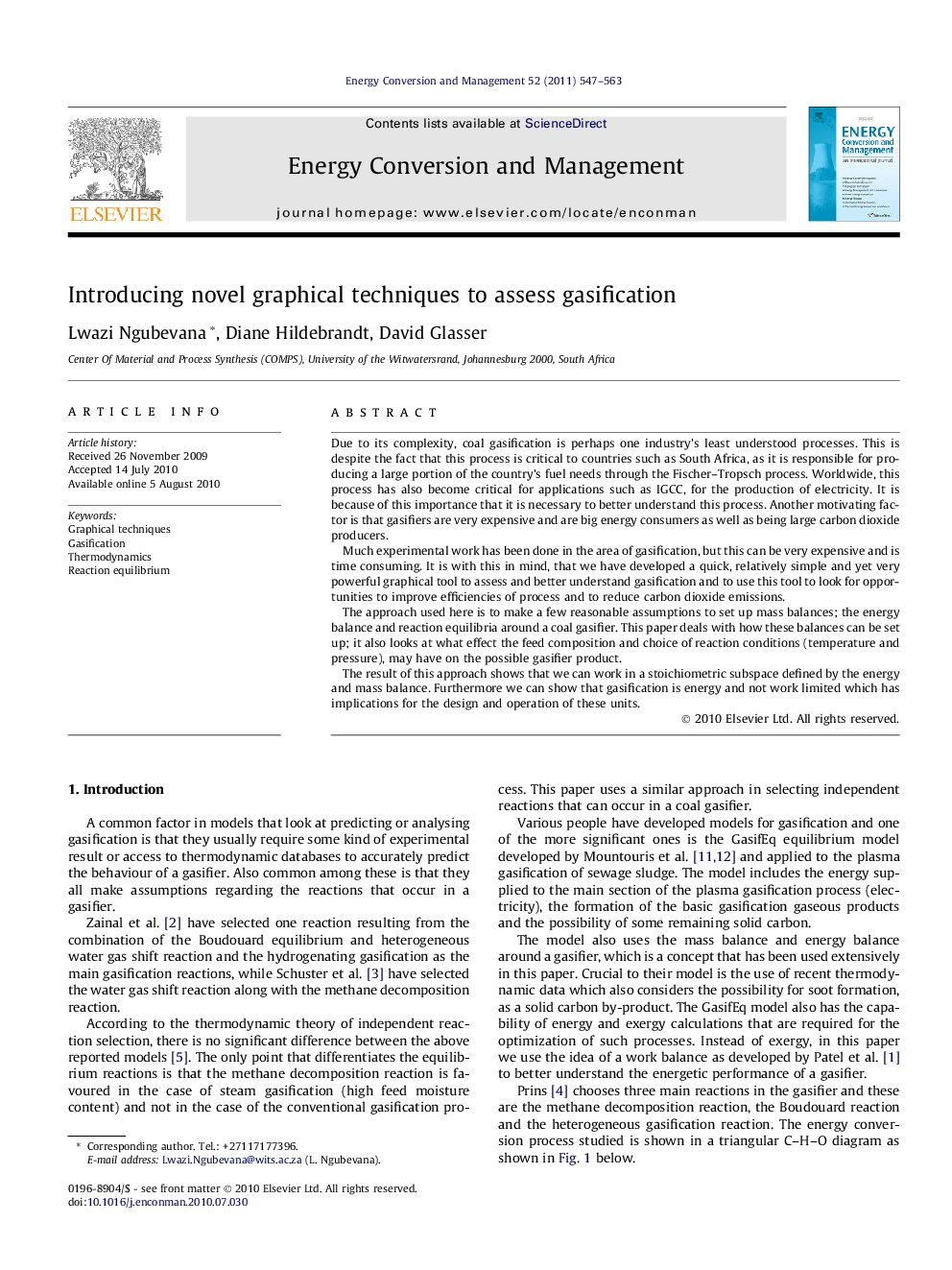| Article ID | Journal | Published Year | Pages | File Type |
|---|---|---|---|---|
| 772487 | Energy Conversion and Management | 2011 | 17 Pages |
Due to its complexity, coal gasification is perhaps one industry’s least understood processes. This is despite the fact that this process is critical to countries such as South Africa, as it is responsible for producing a large portion of the country’s fuel needs through the Fischer–Tropsch process. Worldwide, this process has also become critical for applications such as IGCC, for the production of electricity. It is because of this importance that it is necessary to better understand this process. Another motivating factor is that gasifiers are very expensive and are big energy consumers as well as being large carbon dioxide producers.Much experimental work has been done in the area of gasification, but this can be very expensive and is time consuming. It is with this in mind, that we have developed a quick, relatively simple and yet very powerful graphical tool to assess and better understand gasification and to use this tool to look for opportunities to improve efficiencies of process and to reduce carbon dioxide emissions.The approach used here is to make a few reasonable assumptions to set up mass balances; the energy balance and reaction equilibria around a coal gasifier. This paper deals with how these balances can be set up; it also looks at what effect the feed composition and choice of reaction conditions (temperature and pressure), may have on the possible gasifier product.The result of this approach shows that we can work in a stoichiometric subspace defined by the energy and mass balance. Furthermore we can show that gasification is energy and not work limited which has implications for the design and operation of these units.
